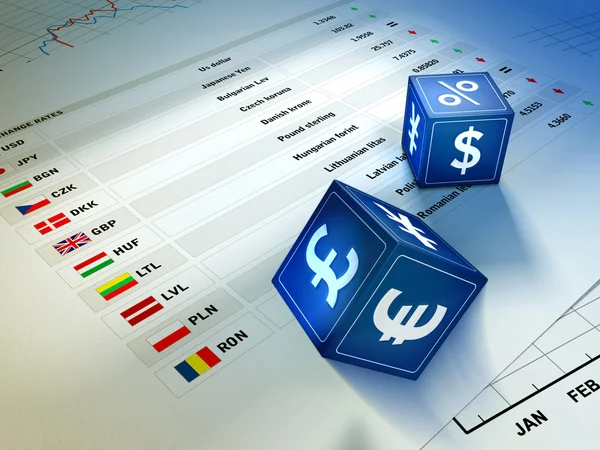The world of foreign exchange, or Forex, is a dynamic and complex market where currencies are traded. It is the largest financial market in the world, with an average daily trading volume exceeding $5 trillion. Understanding how Forex exchange rates are determined and predicting their future movements can be a lucrative skill for investors.
Understanding Forex Exchange Rates: A Primer

Forex exchange rates are the prices at which one currency can be exchanged for another. These rates fluctuate constantly due to supply and demand dynamics in the global market. Several factors influence these fluctuations, including economic indicators, market sentiment, political stability, and others. Exchange rates can be quoted in two ways: direct and indirect. A direct quote is the amount of foreign currency needed to buy one unit of the domestic currency, while an indirect quote is the opposite. Central banks play a pivotal role in setting base interest rates, which indirectly affect exchange rates by altering the cost of borrowing money.
Evaluating Historical Trends in Forex Markets

Historical trends in Forex markets are critical for understanding future movements of exchange rates. By analyzing past behavior, traders can identify patterns and potential directions of currencies. Technical analysis and fundamental analysis are two primary methods used to examine historical data. While technical analysis focuses on price movements and patterns, fundamental analysis looks at economic indicators and events that could influence currency values. Trends can be short-term or long term, and understanding these can help in making informed trading decisions.
The Role of Central Banks in Forex Rates

Central banks play a crucial role in influencing Forex rates through their monetary policy decisions, including setting interest rates and implementing quantitative easing measures. By adjusting the supply of their currency, central banks can influence its price on the global market. For example, lowering interest rates typically weakens a currency, making it cheaper relative to others, and vice versa. Central banks also intervene directly in the Forex market to stabilize or devalue their currency, depending on their economic objectives.
Predictive Models for Forex Exchange Rates

Predicting Forex exchange rates is challenging due to the market’s complexity and sensitivity to a wide range of factors. However, several predictive models are used by traders, including econometric models, time series models, and machine learning algorithms. These models attempt to forecast future movements by analyzing historical data and identifying patterns or relationships between different variables. While no model can predict exchange rates with absolute certainty, they can provide valuable insights and help traders make more informed decisions.
Impact of Global Events on Forex Predictions

Global events significantly impact Forex predictions, as they can alter the economic landscape overnight. Political elections, economic crises, wars, and natural disasters are just a few events that can cause currency values to fluctuate dramatically. Traders must stay informed about global developments and be able to quickly adjust their strategies in response to new information. The unpredictability of these events adds to the challenge of Forex trading.
Navigating Forex Markets: Strategies for Investors

Investors need to employ strategic approaches to navigate the Forex markets successfully. Risk management is crucial, as Forex trading involves significant risk due to market volatility. Diversification, setting stop-loss orders, and understanding leverage are key strategies to mitigate these risks. Investors should also continuously educate themselves about economic indicators, central bank policies, and global events that could affect currency values. Finally, patience and discipline are essential qualities for anyone looking to profit in the Forex market.
Comparison Table of Major Forex Trading Strategies
| Strategy | Description | Risk Level |
|---|---|---|
| Day Trading | Making trades within the same trading day. | High |
| Swing Trading | Taking advantage of price “swings” in the market over days or weeks. | Medium |
| Position Trading | Holding positions for longer periods, from months to years. | Low |
| Scalping | Making a large number of small profits on minor price changes. | Very High |
| Carry Trade | Profiting from the difference in interest rates between two currencies. | Medium to High |
Navigating the Forex market requires a deep understanding of exchange rates, predictions, and global economic factors. By employing sound strategies and staying informed on global events, investors can improve their chances of success in this challenging but potentially rewarding market.






